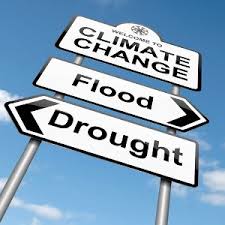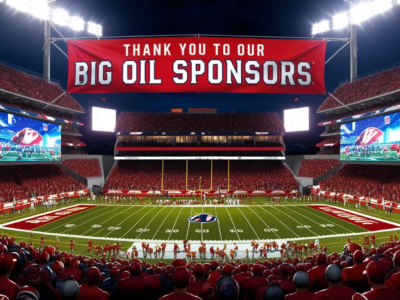Why Repeal the Endangerment Finding?
The aims may be overturning Mass v. EPA and avoiding new rulemakings.
 Much will be said about the weakness of the various justifications EPA and the Department of Energy offered yesterday about why greenhouse gases do not endanger public health and welfare under the Clean Air Act. Those justifications are, indeed, remarkably weak. For example, DOE’s argument that economic damages appear to be lower than economists estimate is a slap in the face to the families of the more than 130 people who died in last month’s horrific, 1000-year flood in Texas or the 30 who died in the Eaton and Palisades fires in January, fires that caused as much as $167 billion in damages. Estimates are that global damages from climate change will soon be $38 trillion annually and exceed the costs of reducing greenhouse gases by six times. The other justifications are similarly flimsy. Moreover, industry generally — with the exception of the anti-environment Competitive Enterprise Institute — seems either indifferent or hostile to the proposed revocation. Finally, EPA can just repeal all the Biden rules that cut greenhouse gases rather than revoking the endangerment finding. Given how weak the justifications are for overturning the endangerment finding, the lack of industry support for it, and EPA’s ability to repeal the Biden rules, why do it?
Much will be said about the weakness of the various justifications EPA and the Department of Energy offered yesterday about why greenhouse gases do not endanger public health and welfare under the Clean Air Act. Those justifications are, indeed, remarkably weak. For example, DOE’s argument that economic damages appear to be lower than economists estimate is a slap in the face to the families of the more than 130 people who died in last month’s horrific, 1000-year flood in Texas or the 30 who died in the Eaton and Palisades fires in January, fires that caused as much as $167 billion in damages. Estimates are that global damages from climate change will soon be $38 trillion annually and exceed the costs of reducing greenhouse gases by six times. The other justifications are similarly flimsy. Moreover, industry generally — with the exception of the anti-environment Competitive Enterprise Institute — seems either indifferent or hostile to the proposed revocation. Finally, EPA can just repeal all the Biden rules that cut greenhouse gases rather than revoking the endangerment finding. Given how weak the justifications are for overturning the endangerment finding, the lack of industry support for it, and EPA’s ability to repeal the Biden rules, why do it?
There are at least two plausible reasons. First, the Trump Administration may be aiming to get the U.S. Supreme Court to overturn its landmark decision in Massachusetts v. EPA. That’s the decision that required EPA to determine whether greenhouse gases — when emitted from vehicles — endanger public health and welfare. Second, repealing the endangerment finding allows EPA to avoid replacing all the Biden Administration climate rules that were issued under the Clean Air Act after it rescinds them.
Massachusetts v. EPA, decided in 2007, had two important findings. First, the Court held that air pollutants, as defined by the Clean Air Act, include greenhouse gases like carbon dioxide and methane. Second, the Court directed the EPA Administrator, under the language of the Clean Air Act (CAA), to determine whether greenhouse gases (GHGs) emitted from automobiles endanger public health and welfare. If the Administrator made such a determination, then it had to regulate those emissions. And because the CAA contains endangerment language in other sections, a finding of endangerment would trigger other requirements to issue regulations for sources like power plants.
EPA subsequently determined — to no one’s surprise — that greenhouse gases emitted from automobiles endanger public health and welfare, a determination President Obama issued in 2009. That determination led to the first ever national GHG standards for vehicles, GHG standards for heavy duty trucks, GHG standards for new large sources of climate pollutants, and GHG standards for power plants, among others.
Mass v. EPA was a landmark decision, one of the most important environmental decisions ever issued. But four justices dissented from its holdings. The dissenting justices included Chief Justice Roberts, Justice Thomas, and Justice Alito. Conservative justices Gorsuch, Kavanaugh, and Barrett were not on the Court at the time. As a judge on the D.C. Circuit Court of Appeal before his appointment to the Supreme Court, Justice Kavanaugh made clear his position that the Clean Air Act shouldn’t be used to regulate greenhouse gases. It doesn’t seem farfetched to assume that the votes exist to overturn Mass v. EPA. To be sure, to date, the Court has refused to overturn the case, instead limiting EPA’s authority to issue ambitious regulations in cases like West Virginia v EPA and UARG v. EPA. But repealing the endangerment finding goes to the heart of the ruling and could give the Court a clear opening to decide that the majority in Mass v. EPA got it wrong.
Repeal of the endangerment finding has another, more immediate benefit for the anti-regulatory Zeldin and his gutted team at EPA. If the current finding — that greenhouse gases endanger public health and welfare — remains in place, even if EPA rolls back all of the Biden climate rules, the agency still has a legal obligation to replace the rules with something. During the first Trump term, that’s exactly what happened: EPA issued new, very weak rules to regulate GHGs from automobiles and from power plants. Those rules were immediately challenged and the power plant rule was struck down. Their basis in law, science, and economics was weak, to say the least. Ultimately, they were rescinded and replaced by the Biden Administration (full disclosure: I was part of the team that replaced Trump’s so-called “SAFE” rule with much stronger standards). But if greenhouse gases don’t endanger public health and welfare, they don’t have to be regulated! EPA wouldn’t need to use its much smaller staff to gin up rules that are laughably weak to pretend to be cutting greenhouse gases.
We have a ways to go before repeal of the endangerment finding is finalized. EPA must seek public comment on its proposal. Expect to see a huge number of comments tearing apart the absurd justifications EPA is offering in support of repeal. But if finalized, the legal battle over the repeal will begin and could end up with the overturning of Mass v. EPA. And in the meantime, EPA will have less work to do issuing new GHG rules it doesn’t believe in.






Reader Comments